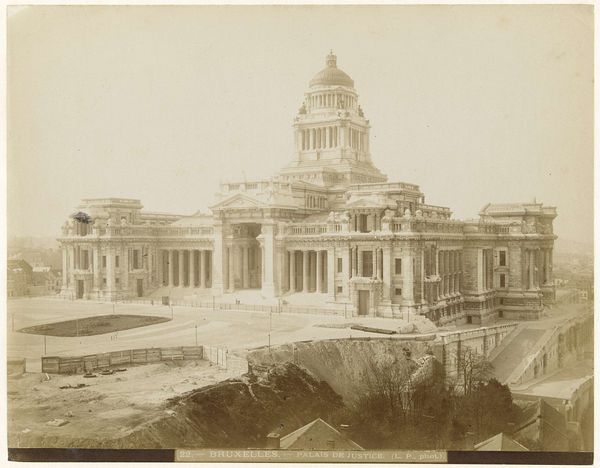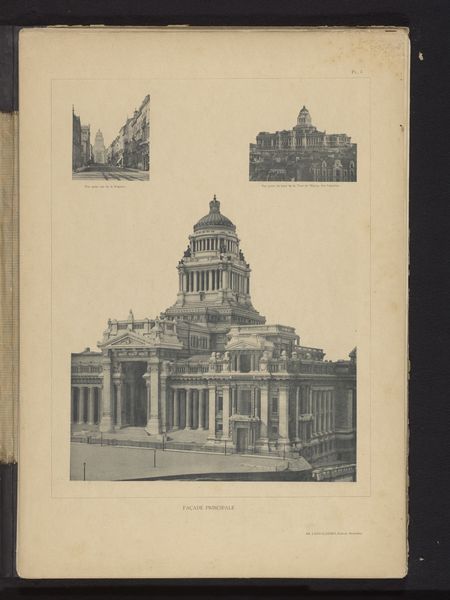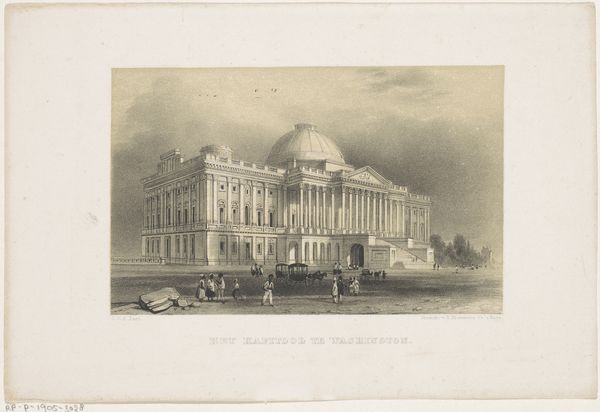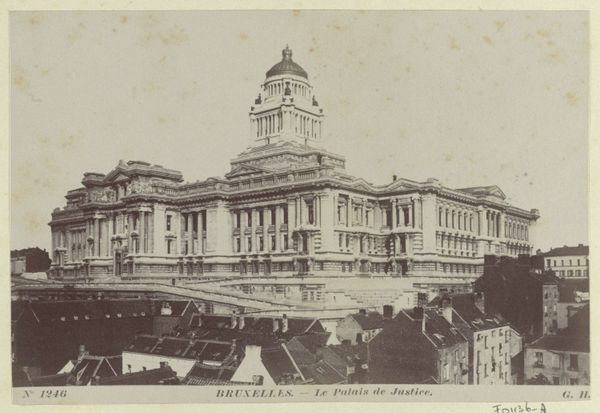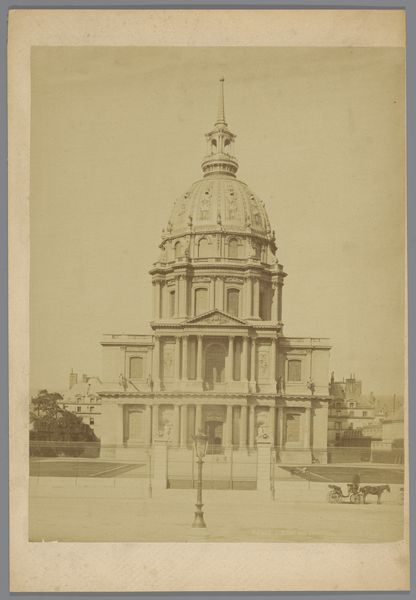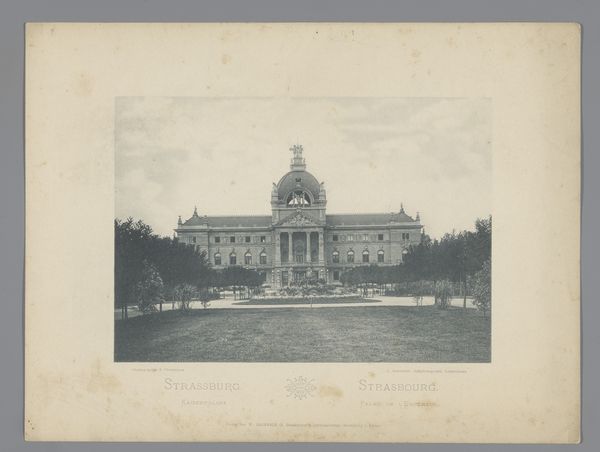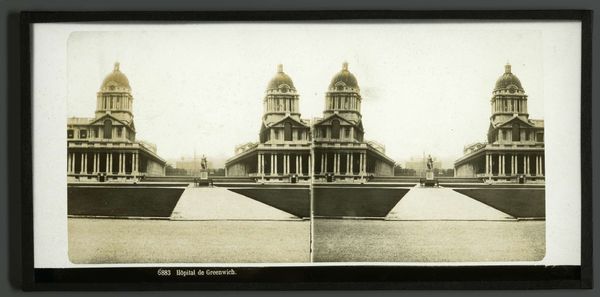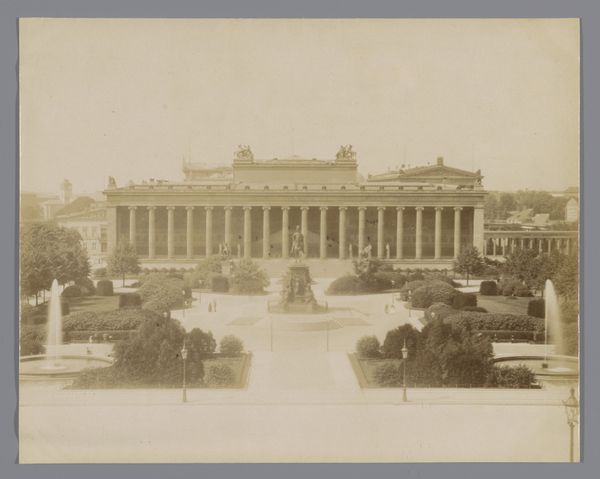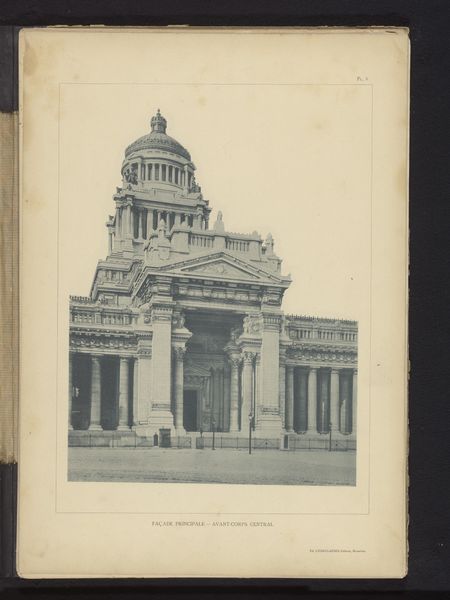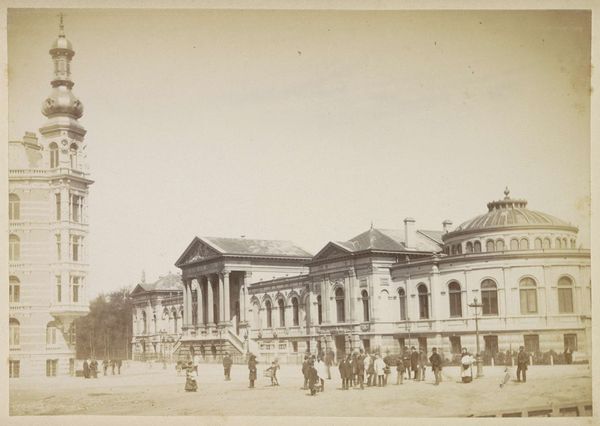
Dimensions: height 96 mm, width 140 mm
Copyright: Rijks Museum: Open Domain
Editor: Here we have a photograph titled "Maquette van het Paleis van Justitie in Brussel," created between 1878 and 1890 by Alexandre de Blochouse. It looks like a meticulously crafted architectural model, giving it an almost surreal quality. What can you tell us about this photograph, from your perspective? Curator: As a materialist, I'm drawn to the labour and means of production involved in both the model and the photograph itself. Think about the artisanal skills required to build this miniature palace. It's not just about aesthetics, but about the tangible process of translating an idea into a physical object. The photograph then becomes a means of distribution and preservation, making that labor accessible. Editor: That's fascinating! So, you're emphasizing the process as a form of work. Is there anything in particular about the materials themselves that stand out? Curator: Absolutely. The choice of materials for the model – wood, plaster, maybe even metal – reveals a commitment to realism and durability, while the photograph preserves a record of these choices, in this photomechanical process. These material choices would likely have affected the budget for the final construction of the actual building, reflecting resource constraints and logistical decisions. The 'realism' within the picture opens questions on whether this representation fulfills an agenda. Editor: I hadn't considered the cost implications! I’m starting to see the model, not just as an object, but also as an investment. Curator: Precisely. Also the photographic negative had value beyond an indexical trace of an idea. Remember too, these photogravures required craft. The consumption of images created capital for the photographer. Editor: This has totally shifted my perspective. Thank you for sharing this analysis of its making and materiality!
Comments
No comments
Be the first to comment and join the conversation on the ultimate creative platform.
